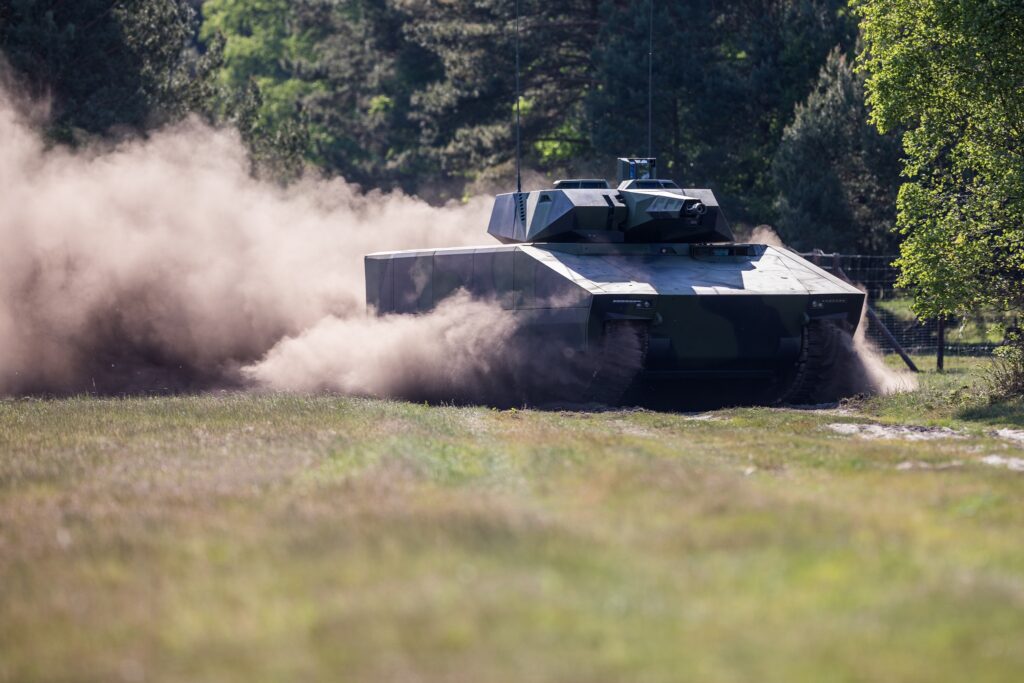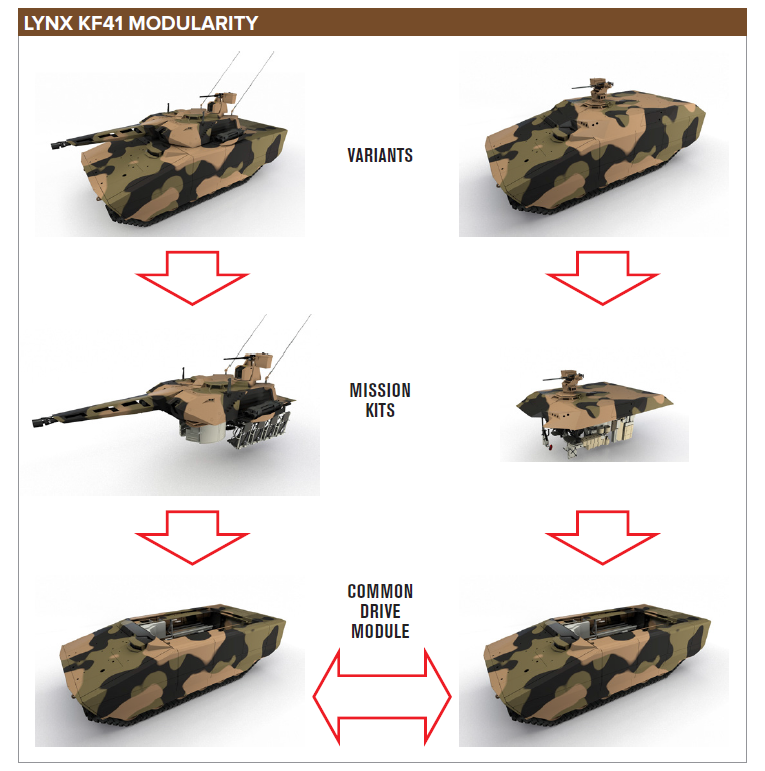
Rheinmetall Lynx
WASHINGTON: American defense electronics firm L3Harris announced this morning they had joined German armsmaker Rheinmetall in its quest to replace the Reagan-era M2 Bradley troop carrier. Rheinmetall, already partnered with Textron and Raytheon, was the first company to publicly throw its hat in the ring for the Optionally Manned Fighting Vehicle (OMFV) competition and has aggressively advertised its sleekly armored offering, the Lynx.
According to the Defense News 100, Rheinmetall is the 33rd largest defense contractor in the world, with almost $4 billion in 2019 revenue. Two of its partners are actually bigger firms. Raytheon is fifth largest in the world, with over $27 billion in 2019 revenue. L3Harris, created by a 2019 merger, is ninth largest, at almost $14 billion. Textron is 38th, at just under $3.3 billion. A fifth partner, transmission manufacturer Allison, isn’t on the top 100 list.
It’s easy to focus on the Lynx’s angular good looks, its turreted 30mm autocannon, or its 55-ton weight when fully uparmored. (It goes down to 35 tons when stripped for air transport). But arguably the most crucial piece of a 21st century fighting vehicle is its electronics, from wireless networks to share targeting data, to AI targeting systems to assist the human gunner, to active protection systems that track and shoot down incoming missiles.
The biggest problem with the Bradley – and the big reason the Army is eager to replace it while keeping the equally venerable M1 Abrams heavy tank in service – is that its electrical system simply can’t support all the electronics that have been added in Iraq-era upgrades. (Bradley also lacks the horsepower to move nimbly under all its added armor). And the most ambitious objective for the Optionally Manned Fighting Vehicle, as its name implies, is extensive automation that will allow it to operate unmanned on some missions and with full crew of just two soldiers, instead of the Bradley’s three.
The Army also wants the OMFV to be easy to upgrade, with tech from different companies able to plug-and-play into the vehicle as long as it meets common interface standards. This approach, called Modular Open Systems Architecture, is an increasingly high priority for the whole joint force.

Rheinmetall has designed Lynx to easily swap components, converting one variant to another within hours.
Rheinmetall’s base vehicle is already modular, with the ability to swap out turrets and other payloads, while Textron builds experimental combat robots for the Army and Raytheon is experienced in developing open architectures. Now the new release touts L3Harris’s electronics and its open architecture expertise as well.
“American Rheinmetall Vehicles, the prime contractor, selected L3Harris to provide vehicle mission systems, cybersecurity and its modular open systems approach (MOSA) for the Lynx,” the release says. “L3Harris’ MOSA can enable cross-platform and cross-domain commonality of parts and subsystems to allow for easy and affordable upgrades.”
Lynx is already being bought by Hungary and competing for a contract in Australia. A US win would be huge for Rheinmetall – but it’s several years away at best. The Army is currently asking competitors only for digital “concept designs” for OMFV; it’ll award contracts for physical prototypes in 2023 and pick a final winner in 2027. That timeline, of course, assumes the Army’s budget isn’t too brutally whacked in 2023.






















